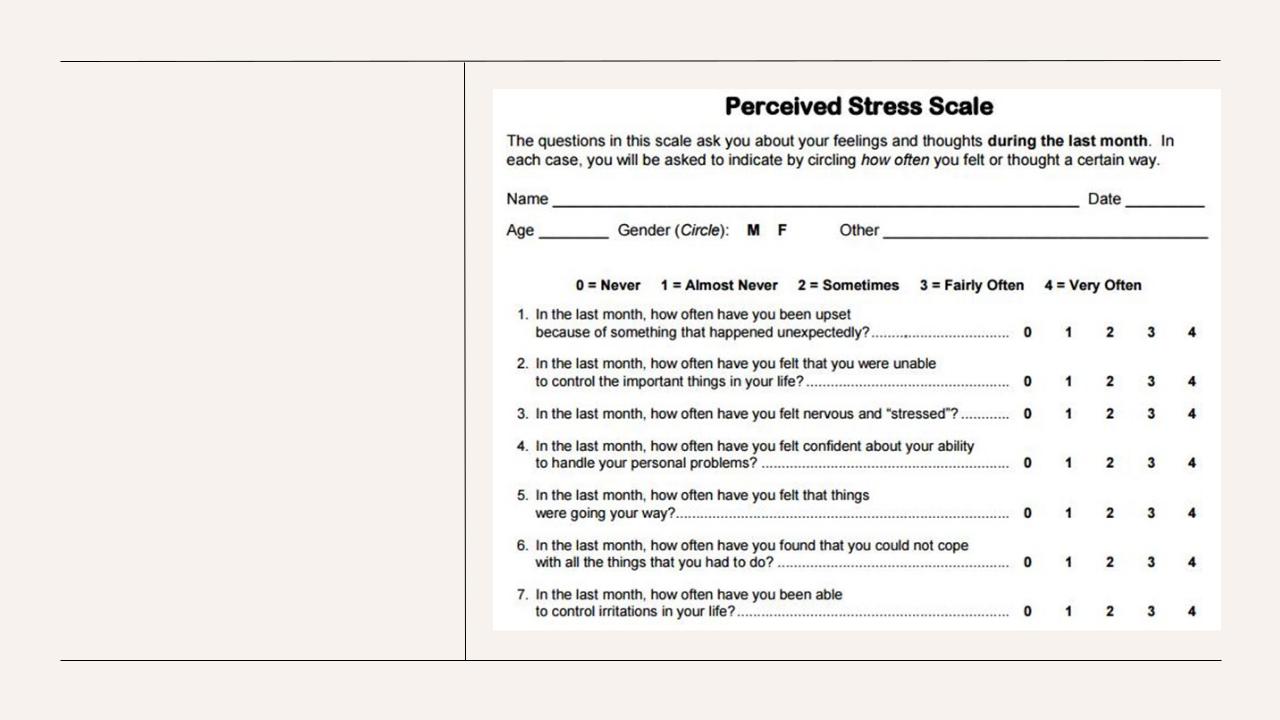
- •Work Stress among Teachers: A Comparison between Primary and Secondary School Teachers
- •Plan
- •Introduction
- •In the "literature review" section, the authors also mention several studies on stress
- •Methodology
- •Results
- •Discussion
- •Conclusion
- •Work Stress among Teachers: A Comparison between Primary and Secondary School Teachers

Work Stress among Teachers: A Comparison between Primary and Secondary School Teachers
A U T H O R S : K A V I TA K . & N O R L I Z A C H E H A S S A N
P U B L I S H E D O N L I N E : 1 0 N O V 2 0 1 8
P R E S E N T E R : K U Z I N A V A L E R I A 2 0 4 / 1

Plan
1.The definition of stress in teachers
2.The type of instrumentation used
3.The determination of the stress
level among primary and secondary school teachers
4.A comparison of stress levels
5.The results
6.Conclusions drawn from the results

Introduction
Research Objectives:
•1. To identify the stress level of primary and secondary school teachers.
•2. To compare the level of stress among primary and secondary school teachers based on demographic factors (marital status, age, experience of teaching and education qualification).
Relevance:
•The teaching profession is a form of social service that is so challenging and stressful. Teachers and educators are needed to be sensitive to developments. Stress adaptingreactions of a teacher includes psychological erections (anxiety and sadness), physiological (headache, high blood pressure) and attitude related (alcohol and smoking addiction, lifestyleand insomnia). Poor working conditions can contribute to stress and lead to a desire to leave a profession.

In the "literature review" section, the authors also mention several studies on stress among
teachers:In the study, questionnaires were distributed questionnaires to gather
initial information about respondents, their level of stress, and the factors that contribute to it.
Part A: gender, race, age, marital status, qualifications, and work experience.
Part B of the study adapted the Teacher Stress Level Questionnaire (TSI), based on a stress level questionnaire developed by Boyle, Falzon, and Baglioni in 1995.

Methodology
The design of the study is descriptive quantitative survey, intended to examine the comparison of work stress between primary and secondary school teachers. The sample population of this research were teachers from schools in a district which was selected using simple random sampling. There are 20 primary schools and 11 secondary schools. The sample size was determined by using the Krejcie and Morgan Table (1970).

Results
•This study was conducted with the participation of 268 respondents.
•133 secondary school teachers (49.6%),
135 primary school teachers (50.3%).
•55 men (20.5%) and 213 women (79.5%).
•The age group between 20 and 30 years old (34.3%).
•Race: Malay (77.2%), Indian (19.4%) and Chinese (3.4%).
•Academic qualifications: people with bachelor's degrees (79.1%),
people with Diploma holders (17.5%), with Masters/PhD holders (3.4%).
•Married teachers (85.1%), single and unmarried teachers (14.9%).
•Most teachers had between 11 and 15 years of experience (27.2%).

Discussion
•There was no significant difference in stress levels among teachers based on their level of education.
•Married respondents reported experiencing more stress than those who were not married.
•There was a significant difference in the level of stress between teachers aged 20-30 years and 31-40 years. There was no significant
difference in average stress levels for people aged 20-30 and 51-60.
•The study found that there was a significant difference in stress levels between teachers with 1- 5 years and 11-15 years of experience. The average stress levels for teachers with 6-10 and 16-20 years of experience did not differ significantly.
To determine the difference in stress levels and stressors between primary and secondary school teachers, seven factors were analyzed:
• mutual understanding with parents
• mutual understanding with colleagues
• workload
• lack of time
• student attitudes
• recognition and support
• lack of resources.
The results of the study indicated that teachers in secondary schools experience more
stress than those in primary schools. With regard to stress factors, all seven
factors showed that secondary school teachers experience more stress than their elementary school counterparts

Conclusion
So, a comparison schools showed that secondary school teachers experience more stress than primary school teachers. This article proposes to continue studying the factors that motivate teachers to perform well, considering both internal and external influences. Therefore, it is essential to identify the most significant motivational factors that contribute to improved teacher performance. Future research should explore additional external and internal motivational factors for teachers from different cultural and ethnic backgrounds.

Work Stress among Teachers: A Comparison between Primary and Secondary School Teachers
A U T H O R S : K A V I TA K . & N O R L I Z A C H E H A S S A N
P U B L I S H E D O N L I N E : 1 0 N O V 2 0 1 8
P R E S E N T E R : K U Z I N A V A L E R I A 2 0 4 / 1
